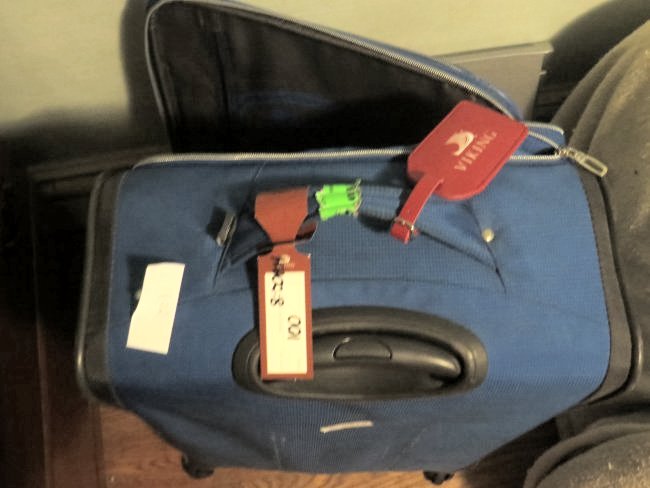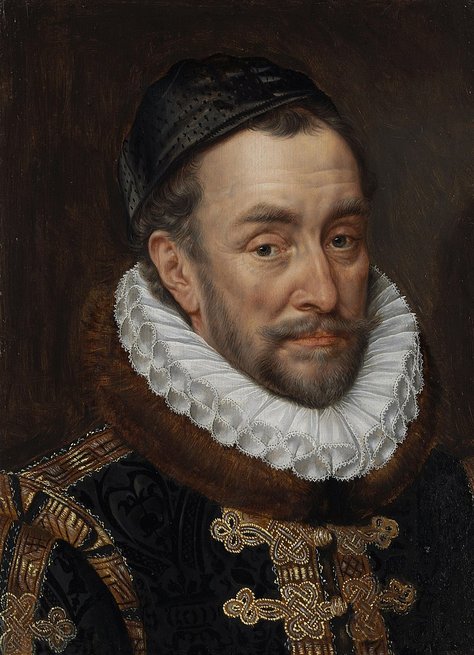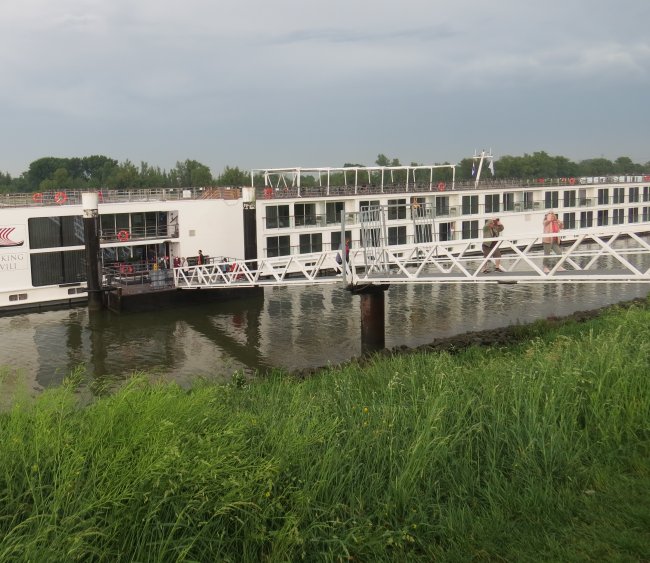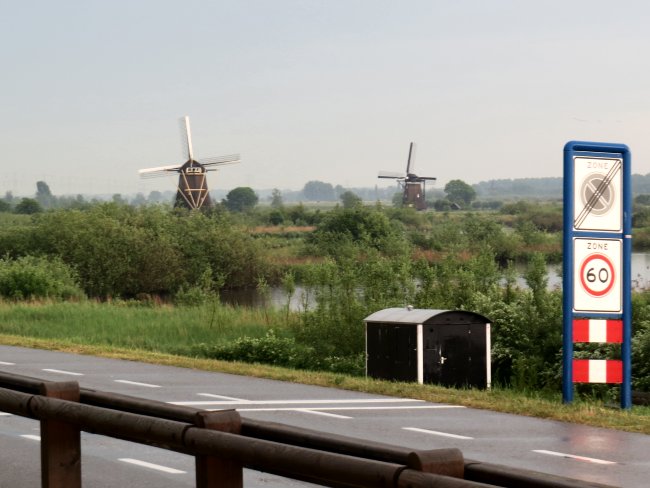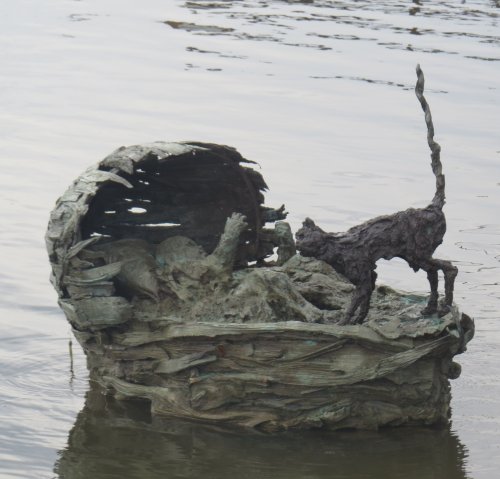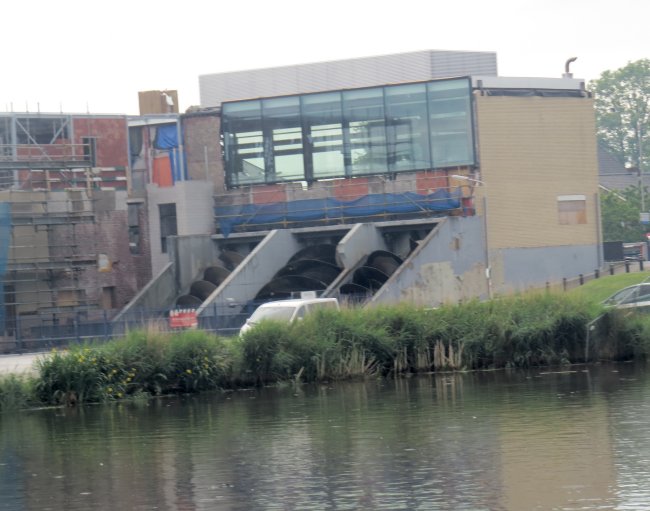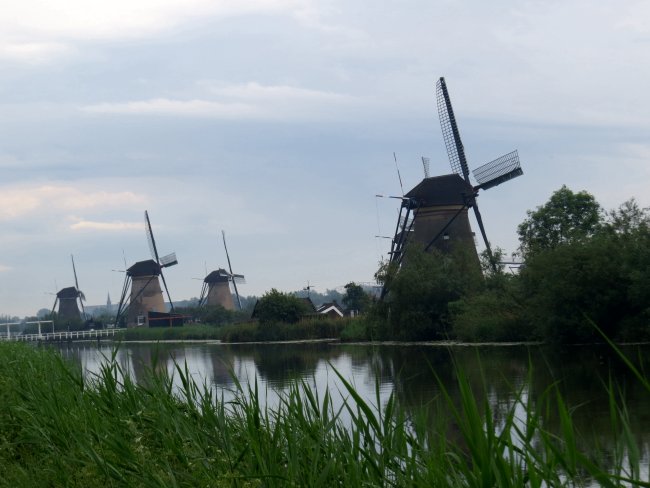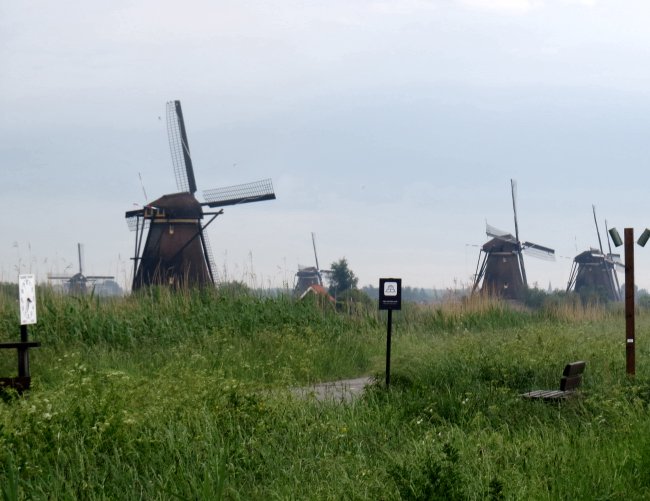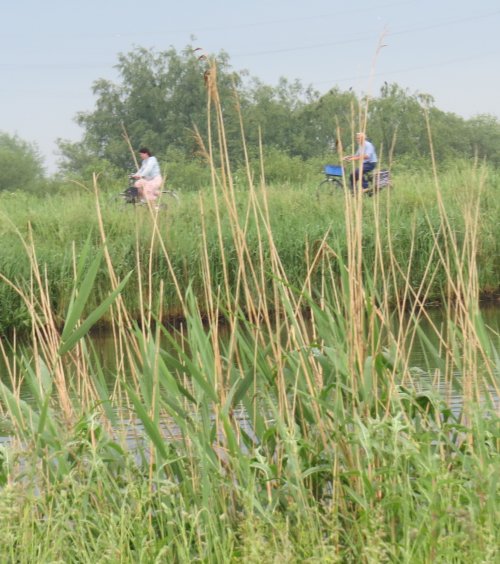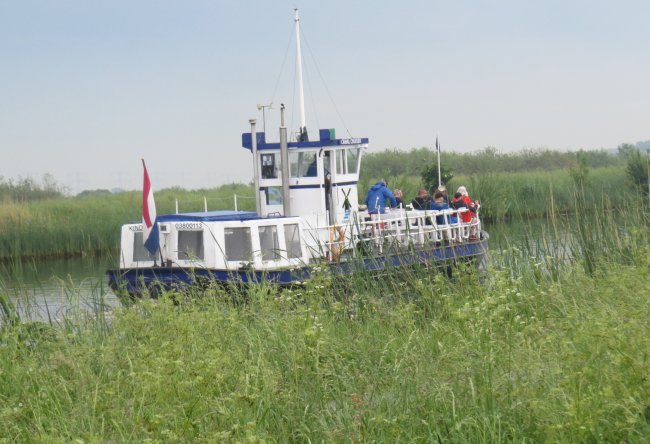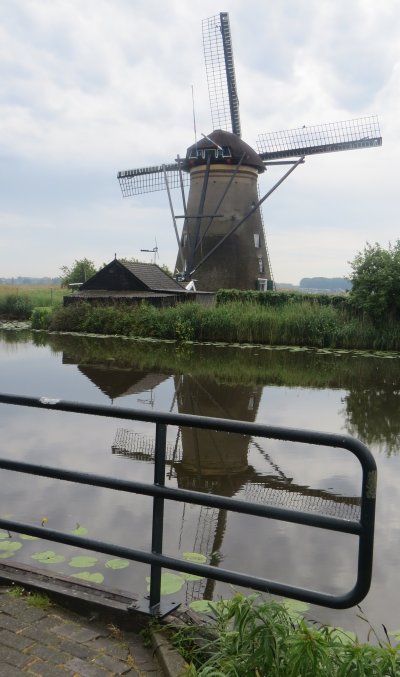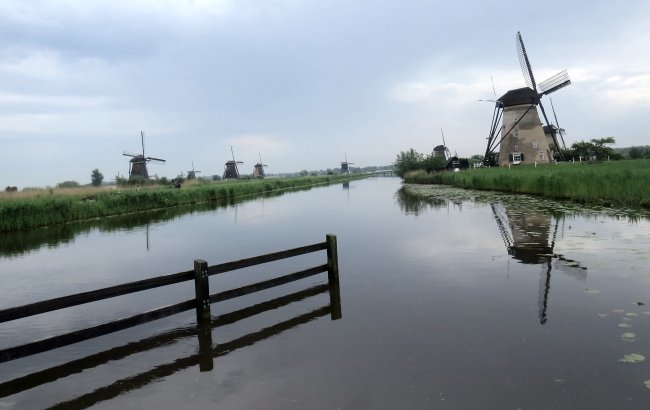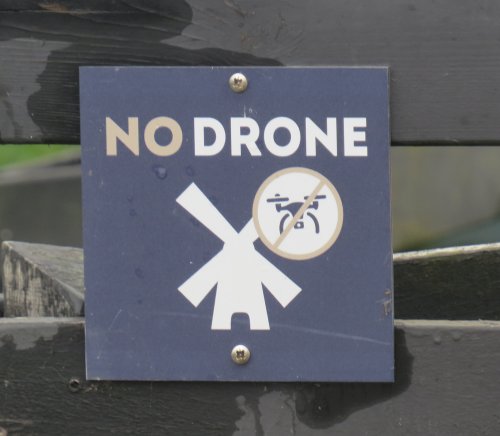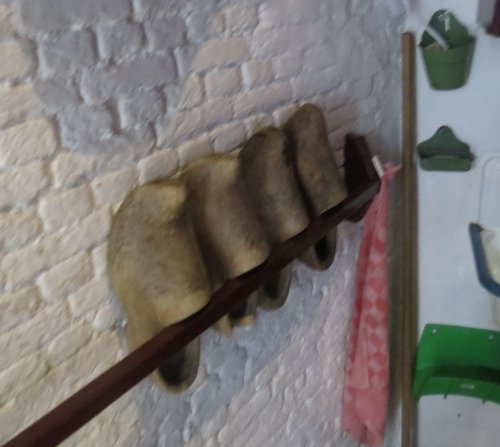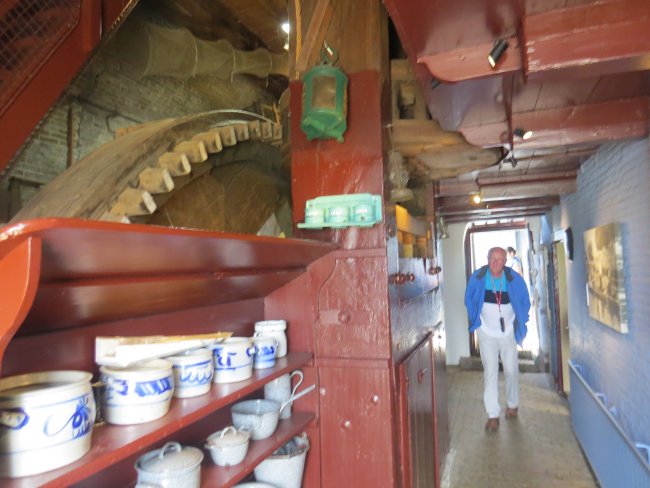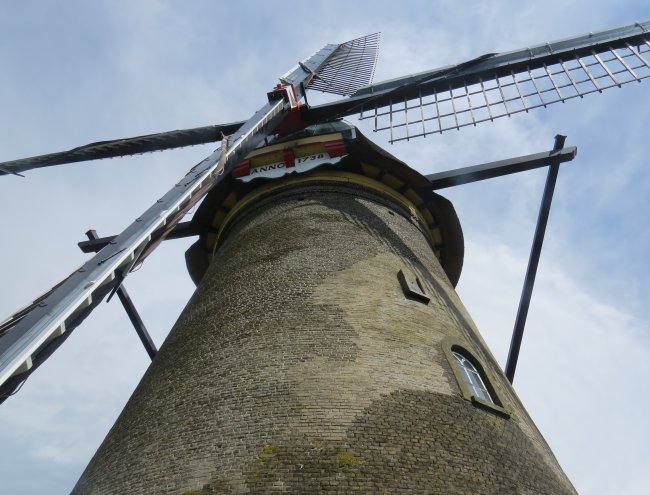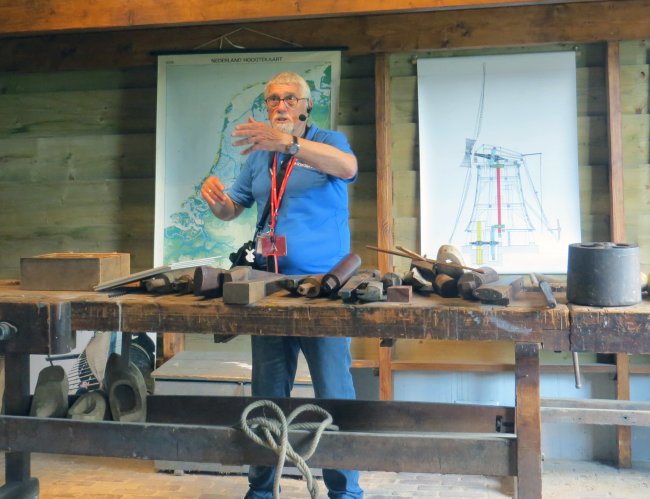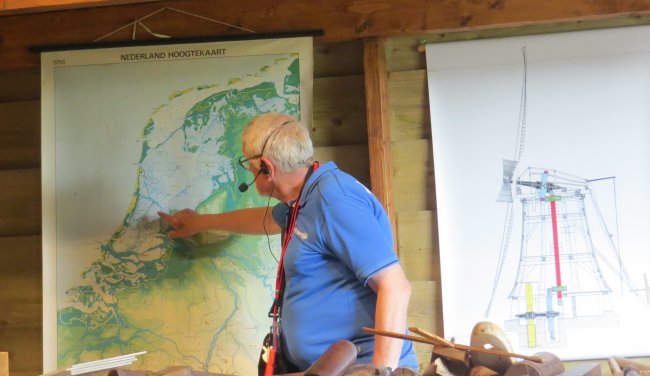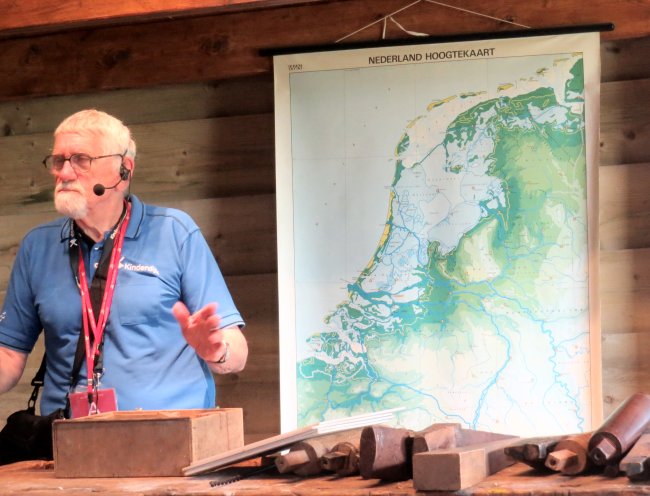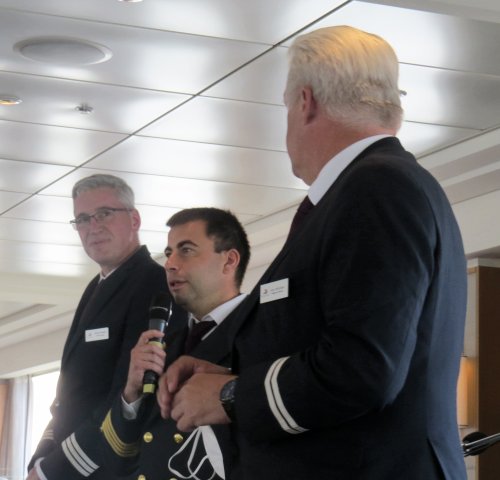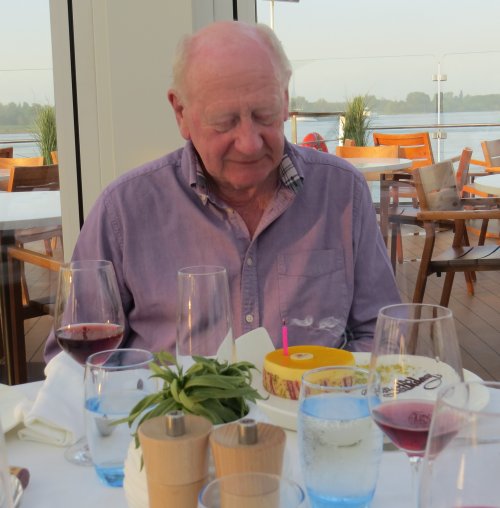Before the excursion : I had companions at breakfast, a couple from Arizona that also lives in Iowa during the summers. Her name was Marie; I don't remember his. I told them that I had often traveled to Iowa to do work for Younkers. Marie said that she loved to shop at the Younkers in Mason City, which, of course, was the inspiration for River City in The Music Man.
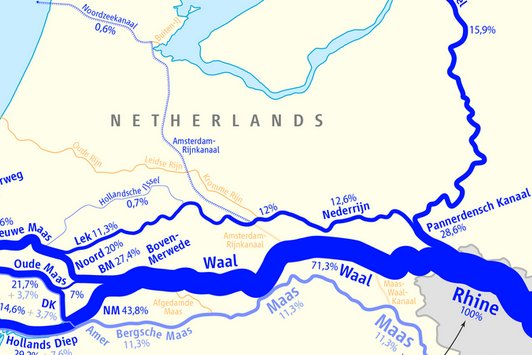
We were not scheduled to reach the day's port of call, Kinderdijk in Netherlands,[1] until 2:00 p.m. At some point during the night Viking Vili and the Rhine swung around to the left toward the North Sea. When we crossed into Netherlands, the name of the river changed to the Waal. Kinderdijk was a very small village at the junction of the Lek and Noord rivers only nine miles east of Rotterdam. I am pretty sure that we docked on the Noord for the excursions in Kinderdijk.
At 10 a.m. Gary Nicholson was scheduled to explain the disembarkation procedures on Friday and the post-extension programs. He requested that at least one person from each stateroom attend in the lounge or watch on TV. I propped up a couple of pillows against the headboard and listened from my bed in luxurious room #100. I also recorded it.
Gary began his presentation by advising people not to worry about the weather even though the clouds outside looked very threatening. I suspect that Viking's program directors are incapable of admitting that there was such a thing as bad weather. By the end of the presentation the heavens had opened with a cloudburst, the first serious rain that I had seen on the cruise.
Gary then remarked that he was very happy that there were still a few passengers on the ship. "I mean this cruise ..." He did not finish the thought, but everyone knew that he was talking about the people forced off of the ship because they had tested positive for Covid 19.
Everyone had received a printed notice that included the time at which luggage would be collected on Friday when the Viking Vili was docked in Amsterdam. Gary requested that all passengers check to make sure that their luggage made it to the dock and then onto the transport. The colored tags that had been included needed to be attached to all luggage. Mine was brown and included the room number and the time of 8 a.m.Gary did not explain anything about the multitude of waterways in the small country of the Netherlands, but he did say that the ship still needed to go through one more lock.
Final invoices had been distributed to each stateroom. Discrepancies and questions should be reported at the desk. Guests should be out of their rooms by 8:00 a.m. New passengers would be arriving as early as 8:45. People can remain on board, but not in the staterooms.
Antigen test results from samples collected this morning would be provided on Friday for those flying to U.S. The time window for testing had shrunk from 72 hours before departure to 24 hours[2]. The test was only necessary for those traveling to the U.S. Those going to hotels would be tested at the hotel.
The journey from the ship or the Mövenpick Hotel to the airport required between 30 and 45 minutes, depending on traffic. Viking representatives would meet those who were arriving from the ship. VAT refunds could be arranged at the airport.
Evaluation forms had been distributed to all passengers. Gary emphasized that "Met expectations" was considered failure at Viking.
Gratuities, which Gary twice called gratitudes, were already on the invoices that had been delivered. Passengers could add to the amount if they wished or give money directly to people who helped them. The website "My Viking Story" is on the Internet for use by current and former passengers.
All tours of Kinderdijk were scheduled to leave at 2:30. The cafe and gift shop in Kinderdijk did not accept cash.
At a little after 11:00 Gary gave a presentation about the history and the culture of the people of the Netherlands. I listened in my room again. I also recorded it.
The "Dutch Republic" got its independence from the Habsburgs in 1648 at the end of the Eighty Years War.
"It started with William of Orange,"[3] who was previously a diplomat for the Spanish Habsburgs. He more or less started the revolution, more for money than for religious reasons. That was the Dutch Golden Age. They had more ships than all of their neighbors and sailed throughout the world. Americans came close to speaking Dutch.The Netherlands is quite a small place, and about 30 percent of the land has been reclaimed from the sea—or various rivers that lead to the sea—by pumping water out. Today it is densely populated; Amsterdam is busy, busy, busy. Further north is more open countryside.
Gary claimed that painters came to the Netherlands, and it became a "hot bed" for painting. He did not name any of the "Dutch masters" who were actually immigrants.
The painters took on the Calvinistic form of Protestantism that was prevalent in the Netherlands. The painters did not like to show smiles and they shunned religious art.
Three hundred years ago the port of Amsterdam did not exist. The city was built on stilts. Gary's advice to those staying in Amsterdam was "Go and visit the Rijksmuseum." He then showed slides of a fairly large number of paintings. Since most of the people on board would not have time to visit the museum, this seemed strange.
They don't have curtains in their windows in the Netherlands. Anyone could look in. They did not display their wealth; they invested it.
Some Viking Vili staff members then distributed samples of cheese to those attending in the lounge. Lighter cheeses were younger. Jenever (pronounced almost exactly like Geneva) was made from juniper berries. It could only be legally produced in one province in Belgium and one in the Netherlands. "Old jenever" has over 32 percent malt. "New jenever" has much less. There are many different flavors. Gary said that it was always the last drink at Christmas (when no one could find anything else to drink).
Gouda is pronounced Khooda, where the first consonant sound is guttural. Who invented cheese? A hunter found a congealed mess of milk that had been forgotten about for months. That's Gary's version. The cheese producers left it in the packaging material for three or four months. Darker cheese was much older. Both were sold at the airport.
Unlike Gouda, Edam is a protected name. It is much lighter.
Gary mentioned the tulip mania of the 1630's that caused the price of tulips to go through the roof for no discernible reason. He recommended buying the bulbs online to get the freshest bulbs that match your soil. This segment really sounded like a commercial.
The world's first stock market was in the Netherlands. At one time the price of one tulip went to nearly twelve times the average yearly wage. When the market crashed, they said that it would never happen again.
There are more bicycles in Netherlands than people. The cyclists have the right of way, and they seldom if ever stop for pedestrians.The land around Amsterdam's Schiphol Airport was at one time twenty to thirty meters underwater. Like much of the Netherlands it was reclaimed from the sea.
When Gary's presentation was finished I started getting my belongings together and set aside what I would need for the following day. I knew that I might not be able to unpack my suitcase until late in the day.
I then went up to the restaurant for lunch. My enjoyment of the lamb chops that were served that day was somewhat diminished by the downpour of rain easily visible through the windows.
Just before announcing the assembly instructions for the tours of the windmills Gary reported over the intercom that "What you see is what you get." He was referring to the steady drizzle. He admonished us that we should not complain since it was the only inclement weather that we had encountered.
The Windmills excursion: Gary must not have been familiar with the rain-averting power of my poncho, which I had actually retrieved from my backpack for this excursion. I did not need it. Just before we departed from the ship the drizzle abruptly stopped. From that point on the weather was fine, if a little chilly, for the entire excursion.
We never saw the village. The area that we were visiting was a UNESCO site called Alblasserwaard polder. Between the ship and the site was a dike on which a two-lane road had been built.
Everyone wore jackets on the excursion, and those of little faith brought umbrellas. We walked up the long ramp to the dike in single file. We then crossed the road, which, fortunately, seemed to have very little traffic. The tour guides for all of the groups used QuietVoxes even though I did not see anyone in the site who was not from Viking Vili.
Kinderdijk means "children dike". It is named after a young girl who, according to legend, survived the Saint-Elizabeth flood of November 19, 1421, because of "The Cat and the Cradle". Details of the legend and some much better photos of the artwork can be found here.
Our tour guide was named Lex. He was a very knowledgeable volunteer. My recollection is that a few people lived in the windmill houses, but he did not. The purpose of the windmills was not to grind seeds into flour or to run machinery. Their only function was to move the water from one channel to the next higher one and eventually over the dike. They were no longer operational. The condition of the site was maintained by three huge electric-powered rotors that scooped excess water to the other side of the dike.
The cyclists were charged $84 per person to ride around on a perfectly flat area that contained absolutely nothing besides water, grass, windmills, and the occasional duck. This must surely have been the worst excursion per dollar on the entire cruise. The description says that the bikers were allowed to "peek inside" one of the windmills.
All the windmills that we could see were missing one major part, the cloth "sails" that covered the wooden arms and caught the wind. They all had sails, but they were not mounted. Putting the sails up and taking them down was one of the major challenges for the owner of the windmill. It could be done from the ground, but it was laborious, and it would be dangerous with tourists walking around them.
At least we got to snoop around inside one of the windmills. We even were allowed to climb up to the top. We could see some of the gears that were attached to the shaft, but it was much too complicated for me to figure out how they actually were able to drain the area. As I tell people, I know nothing practical.
Lex explained that the water was moved from one channel to another. I did not understand why the water did not start finding it's own level as soon as it was moved. All of the waterways were connected. Maybe I should have asked, but I was not really that interested. I have always been willing to accept that some complicated engineering concepts just worked.
Our last stop was a fairly big room that had enough benches for everyone in the group to sit. Some of the tools and materials used by the people running the windmills were passed around. They were, without a doubt, quite sturdy. Lex again tried to explain the engineering principles. Some of the people probably understood how they worked, but I didn't.
Afterwards we were allotted a little free time. The only places to go were the cafe and gift shop. I just walked back to the ship.
It was a little disappointing that the last stop on the cruise was, for me, the least interesting. I wondered whether the cruise would work better if the ship went in the opposite direction (as we had originally planned), and this was the first stop rather than the last one. I, for one, might have appreciated a stress-free day while I was still jet-lagged and frazzled from all the connections and paperwork. On the other hand, prior to this one, every port of call since Melk had seemed better than the previous one, culminating in the wonderful experience in Cologne. If we went the other way, I might have found things more and more disappointing.
I felt sorry for the people who would be departing the next day. Their experiences in the Netherlands would be limited to Kinderdijk and Schiphol Airport.
After the excursion: I can see that the Viking Daily says that the ship stopped briefly in Rotterdam to pick up the passengers who took the cheese-making excursion. I don't remember that stop at all. Maybe I took a nap after returning to my room, or perhaps I was just oblivious. There was never a strong indication that the ship was moving or stopped.
I do remember going to the reception desk with my invoice. It listed one drink that I would never have ordered. It also was missing one of the excursions and one of the Scotches that I did order in the lounge. The person at the desk took off the erroneous drink and added the excursion. For some reason he told me not to worry about the other drink.
I finished Spoonbenders and returned it to the ship's library. I really enjoyed it. I resolved to try to find other books by Daryl Gregory.
I changed into my black shoes and socks and my black trousers to attend the "Captain's Cocktail Party" and the "Final Farewell" in the lounge. I located Mike and Vivienne there and sat with them.Gary Nicholson acted as MC. When he introduced Martijn and the captain, Dimitar Dimitrov, Jerzy played "Colonel Bogey's March" on the keyboard. Many people clapped along. The captain's speech was very short. I feel certain that he had delivered exactly the same words every two weeks for as long as he had been with Viking.
Martijn claimed that he had predicted that day's abrupt improvement in the weather. He then named a few crew members who were present and thanked them "for going ten extra miles every day". Why only ten? A marathon runner does over twenty-six miles, and some people have done one hundred or more in one day.
Martijn then talked about the questionnaire. He had advised passengers to "stay on the left sides" like the Brits do. Jerzy then played "After the Ball"
Gary talked a little about Covid. He said that Martijn had the dirty job every morning of escorting couples off of the ship. Gary called him "the Grim Reaper".After the presentation ended I told Mike and Vivienne how much I enjoyed my experience in Cologne. They said that it sounded great. They wanted to hurry to get one of the tables on the Aquavit Terrace. We managed to find an empty table there, and it was indeed quite a pleasant way to dine.
I had an appetizer of meatballs, which seemed a little strange, and steak. The dessert, a pear tart, was very tasty. I told them that Gary had walked me over to the cathedral and told me, among other things that thirty people[4] had been removed from the ship for testing positive for Covid-19. I also described parts of my experience in the lofty reaches of the cathedral.They told me that they had gone out to eat in Cologne and had almost missed the deadline for the ship's departure. They also told me about an adventure that they had had years earlier driving in Cuba. I should have written up notes about this when it was still fresh in my mind. I remember being surprised that they could travel in Cuba at all, but then I realized that only the U.S. still treated Cuba as a pariah state.
A few waiters then appeared and gathered around Mike and sang "Happy Birthday" to him. I asked softly, "Dare I ask?" He replied that he was 76.This was a marvelous way to end the cruise—sharing birthday cake with my two new friends from Tyneside. We were the last people to leave the Aquavit Terrace. Mike gave me a card with his email address on it. He said that if I did read his book[5], he would be interested in what I thought of it. I promised to let him know.
I thanked the Barkes for allowing me to be an honorary Geordie and share experiences with them. I said that they probably could not appreciate how much this meant to me.
I went back to the room and packed. While I was in the shower, a package was delivered with my final invoice.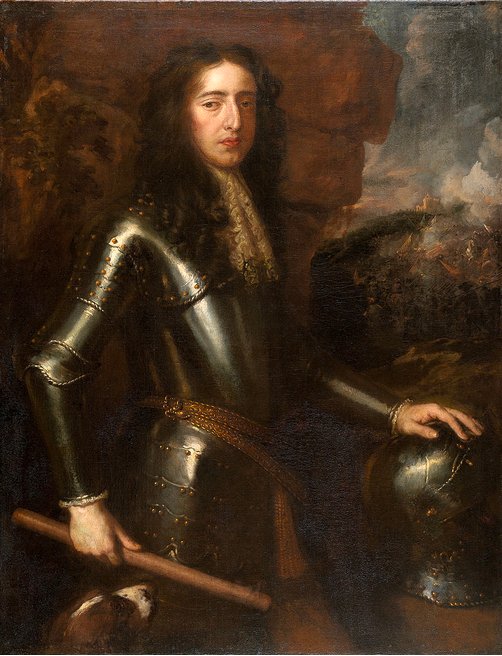
[1] I learned later that "Netherlands" and "Holland" were not the same thing. The former is the name of the country, which has twelve provinces. Holland consists of the two provinces Nord-Holland and Zuid-Holland. Technically, the name of the country is the Kingdom of the Netherlands.
[2] The new requirement for returning U.S. citizens was actually that the test be administered on the same date as departure or on the day before. The test that I took was much more than 24 hours before departure. The U.S. government dropped the requirement entirely shortly after I departed Europe. Not long after that the prevalence of the disease in the U.S. increased markedly.
[3] This was confusing. Gary was referring to William I, who was Prince of Orange from 1554 to 1584. Outside of the Netherlands the term "William of Orange" generally is applied to William III, the Prince of Orange under the Dutch Republic who eventually became King of England.


